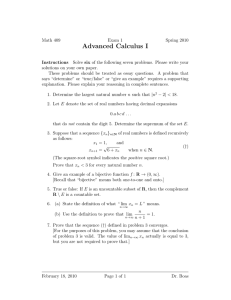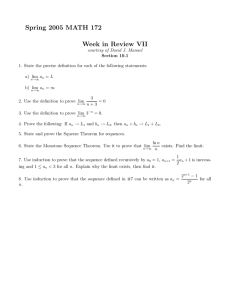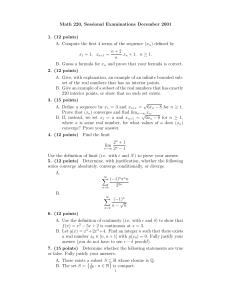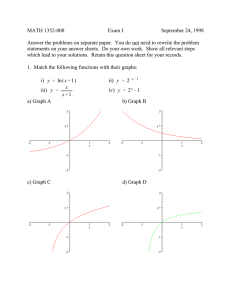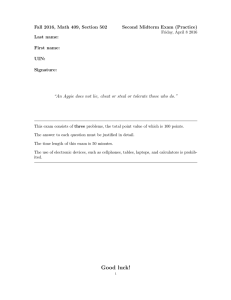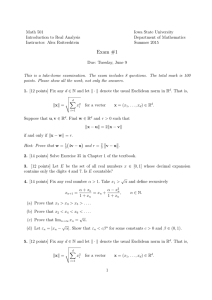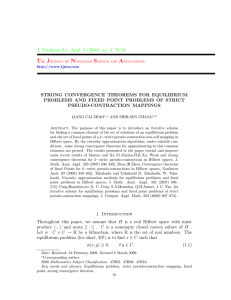Problem Set 8 |x−y|. 1. For a set E ⊂ R
advertisement
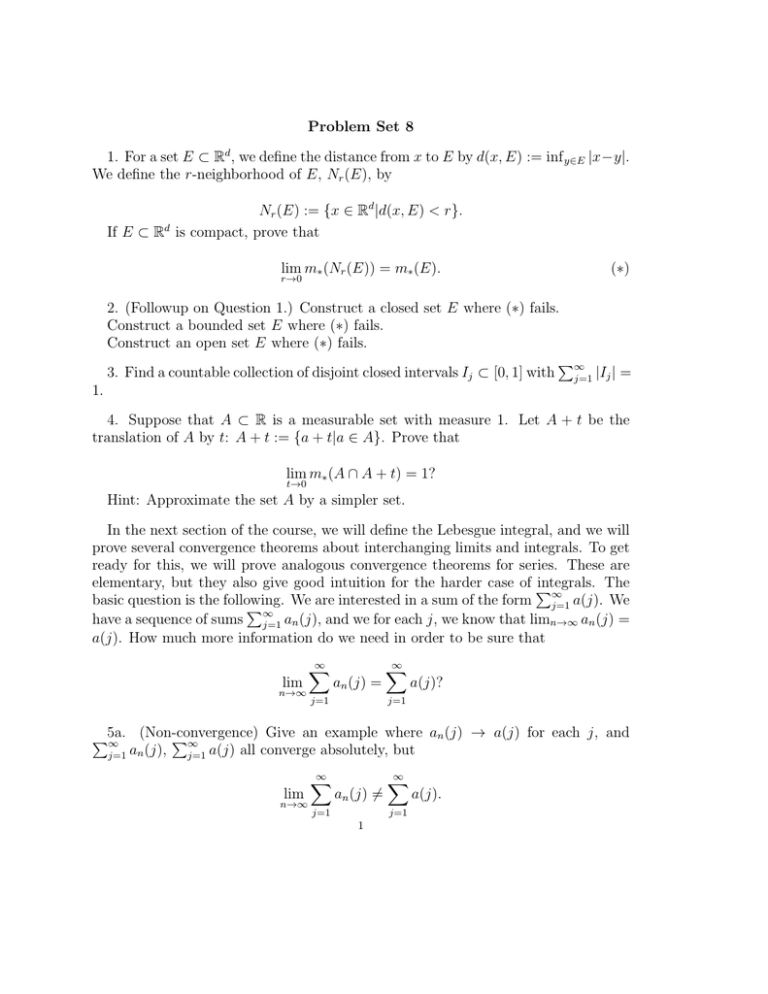
Problem Set 8
1. For a set E ⊂ Rd , we define the distance from x to E by d(x, E) := inf y∈E |x−y|.
We define the r-neighborhood of E, Nr (E), by
Nr (E) := {x ∈ Rd |d(x, E) < r}.
If E ⊂ Rd is compact, prove that
lim m∗ (Nr (E)) = m∗ (E).
r→0
(∗)
2. (Followup on Question 1.) Construct a closed set E where (∗) fails.
Construct a bounded set E where (∗) fails.
Construct an open set E where (∗) fails.
P
3. Find a countable collection of disjoint closed intervals Ij ⊂ [0, 1] with ∞
j=1 |Ij | =
1.
4. Suppose that A ⊂ R is a measurable set with measure 1. Let A + t be the
translation of A by t: A + t := {a + t|a ∈ A}. Prove that
lim m∗ (A ∩ A + t) = 1?
t→0
Hint: Approximate the set A by a simpler set.
In the next section of the course, we will define the Lebesgue integral, and we will
prove several convergence theorems about interchanging limits and integrals. To get
ready for this, we will prove analogous convergence theorems for series. These are
elementary, but they also give good intuition for the harder case of P
integrals. The
basic question is the following. We are interested in a sum of the form ∞
j=1 a(j). We
P∞
have a sequence of sums j=1 an (j), and we for each j, we know that limn→∞ an (j) =
a(j). How much more information do we need in order to be sure that
lim
n→∞
∞
X
an (j) =
j=1
∞
X
a(j)?
j=1
(Non-convergence)
Give an example where an (j) → a(j) for each j, and
P5a.
P∞
∞
j=1 an (j),
j=1 a(j) all converge absolutely, but
lim
n→∞
∞
X
an (j) 6=
j=1
∞
X
j=1
1
a(j).
2
(Dominated convergence) Suppose that for all j, n, |an (j)| ≤ b(j), and that
P5b.
∞
b(j)
< ∞. If an (j) → a(j) for each j, then prove that
j=1
lim
n→∞
∞
X
j=1
an (j) =
∞
X
j=1
a(j).
